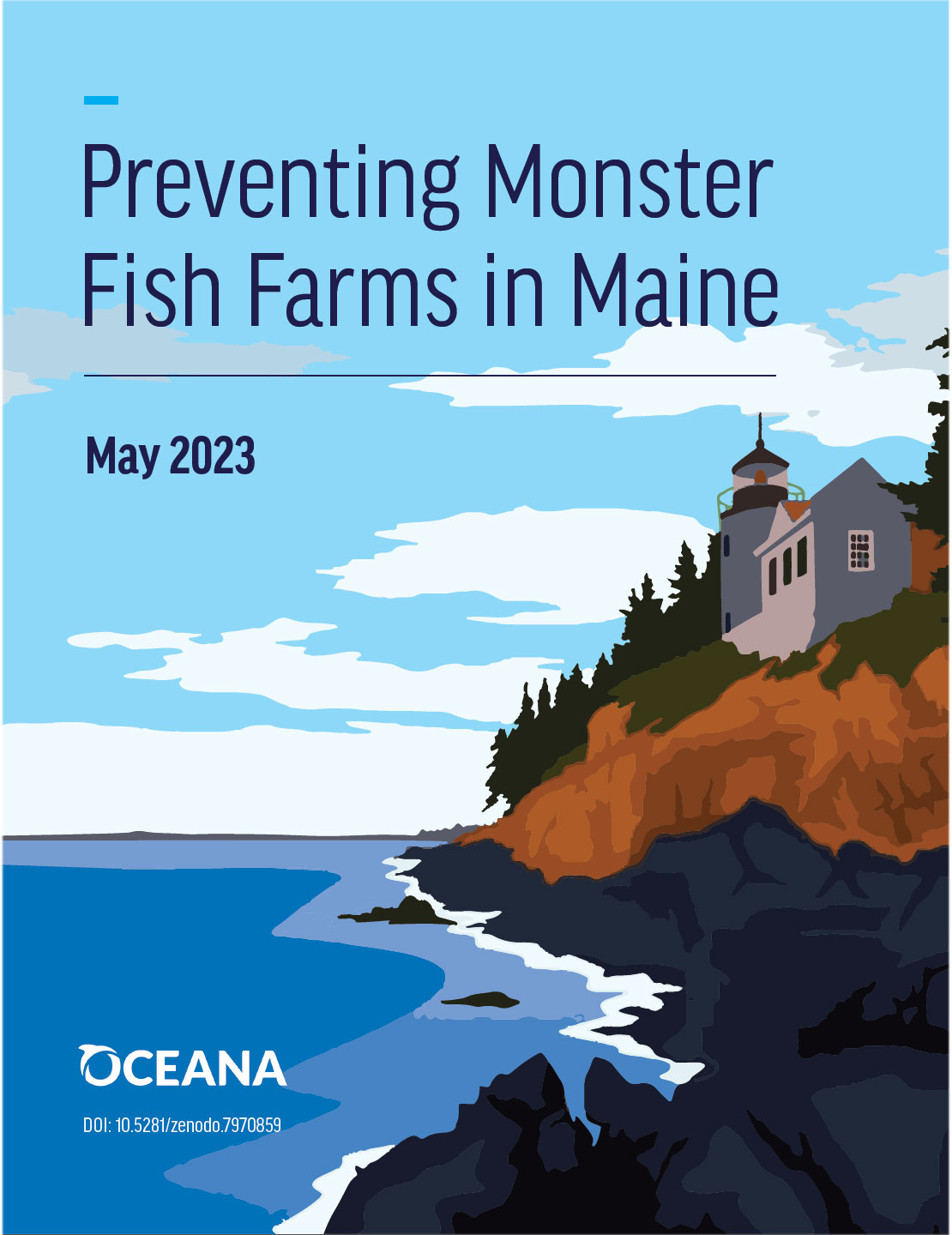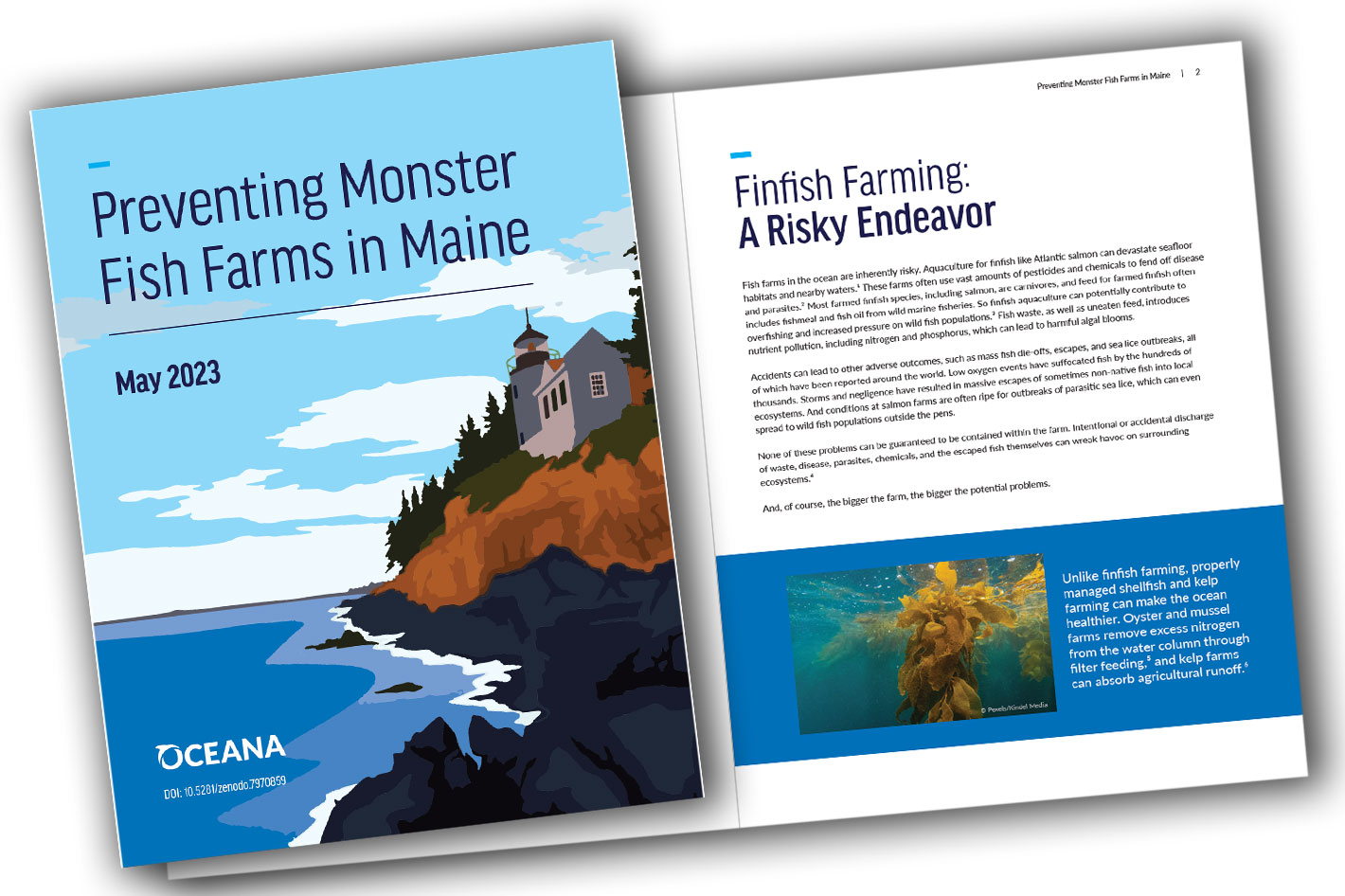The National Oceanic and Atmospheric Administrations recently published a new Aquaculture Science Advice Handbook to help foster the growing interest for aquaculture. Now the environmental group Oceana has published a report warning about the danger of what it calls "monster fish farms."
With millions of square miles of coastline and ocean access, the United States is in a good position to expand its aquaculture production, as a growing community of aquaculture growers farm dozens of different species, including oysters, clams, mussels, shrimp and crayfish, as well as fish like trout, catfish, salmon, and even seaweed and kelp. There is, in fact, mounting interest in marine aquaculture – or farmed seafood – development in the United States, and recently NOAA published a new Aquaculture Science Advice Handbook.
While there are positive aspects to aquaculture, NOAA acknowledges, in its Aquaculture Science Advice Handbook, that while “there is a mounting interest in marine aquaculture development in the United States...there is also a growing need to provide regulators with relevant and rigorously developed science advice to support and inform aquaculture management decisions.”
Now the report published by Oceana says that new legislation is needed to save Maine from large fish farm operations. The organization claims that “Maine’s regulations lack limits to protect the state’s waters, economy, and coastal way of life from extremely large and disastrous aquaculture projects.”
The Oceana report contends that “Maine’s current regulations fail to protect the state’s coastal way of life, economy, and natural beauty from extremely large and disastrous aquaculture projects like the one proposed by Norwegian-based company American Aquafarms in 2021.” The organization says that “if allowed to move forward as originally outlined, this monster fish farm would cover a surface area the size of 15 football fields in Frenchman Bay, Maine, just half a mile offshore of Acadia National Park. The proposed farm would produce 30,000 metric tons of salmon every year, making it one of the largest ocean-pen salmon farms in the world.
4.1 billion gallons of wastewater daily
Oceana says that plan is nearly double (by weight) the maximum size for such farms in Norway, the world’s top producer of farmed salmon. The facility would also be more than twice as densely stocked as the legal limit for fish farms in Chile, the world’s second largest producer of salmon, the groupo says. Limits on the size (by weight) or stocking density of salmon farms are critical to preventing disease and other threats, while also reducing the scale of disasters like mass die-offs and fish escapes that we have seen all over the world.
“If this project is allowed to move forward, it would be one of the largest ocean-based salmon farms in the world, producing 1,500 dump trucks’ worth of salmon every year,” said Matt Dundas, campaign director at Oceana. “Right now, there are no clear limits on the size (by weight) or stocking density of ocean-based finfish aquaculture projects in Maine. Without limits, projects like this could destroy everything we love about Maine.”
The report focuses on Oceana's critique of the project, saying that “the American Aquafarms project would release 4.1 billion gallons of polluted wastewater into Frenchman Bay every day, while also bringing noise, light pollution, and daily boat traffic to this remote and beautiful area. Around the world, massive salmon farms like this have also been known to invite disease and parasites, which often require vast amounts of pesticides and harmful chemicals. In fact, many governments have put limits on pesticide and antibiotic use, pollution discharge, and the size (by weight) and density of fish farming operations.”
Oceana notes that “Alaska, Washington, Oregon, and California have gone as far as banning ocean-based salmon farming in their state waters. Maine is now the only U.S. state with salmon farms in state waters.” In April 2022, Oceana released the results of a poll finding that 66 percent of voters in Hancock County, Maine (where the American Aquafarms proposed operation would be located) oppose the project.
 Maine needs unambiguous regulation
Maine needs unambiguous regulation
Following public outcry, Maine’s Department of Marine Resources rejected American Aquafarms’ proposal in April 2022, but the company remains adamant that it will reapply. While both Gov. Janet Mills and former Gov. Paul LePage have publicly opposed the project, Oceana says the state’s lack of limits on size (by weight) and stocking density leave Maine’s waters vulnerable to similar proposals.
A bill before the state legislature, L.D. 1951, would enact one such critical limit, creating a maximum stocking density for marine finfish farms. The bipartisan bill is sponsored by Sen. Nicole Grohoski (D-Hancock County) and co-sponsored by House Minority Leader Rep. Billy Bob Faulkingham (R-Winter Harbor) and Senate President Troy Jackson (D-Aroostook).
“By setting strict limits on the density of the fish in the pens, we can prevent monster fish farms from ever being considered in Maine’s waters,” said Dundas. “To put it simply, the bigger the farm, the bigger the risk. The only way to ensure that projects like this never move forward in the future is by setting clear limits now. It is vital that bill L.D. 1951 passes to ensure the future of Maine’s coastal way of life is protected.”
Oceana’s report contends that “ocean-based fish farms are inherently risky. Not only can they devastate seafloor habitats and nearby waters, these farms often use vast amounts of pesticides and chemicals to prevent disease and parasites. Most finfish species are also carnivores and require fishmeal and fish oil from wild ocean fisheries. Fish waste and uneaten feed also pollutes the water and can lead to harmful algal blooms. Mass fish die-offs, escapes, and sea lice outbreaks, have also been reported all over the world, wreaking havoc on surrounding ecosystems. Since 2000, there have been several thousand documented finfish farming incidents around the world.”
In 2021, Maine’s fisheries brought in $890 million in revenue — $730 million was from lobster catch alone, and the report notes that established aquaculture operations contribute to the economy as well. Maine currently hosts scores of aquaculture projects, including oysters, mussels, kelp, salmon, and other finfish, which together brought in $72 million in 2021.
Small-scale, restorative aquaculture of shellfish and kelp can benefit the surrounding ecosystems, but marine finfish aquaculture is riskier and dirtier, and warrants careful oversight and clear, unambiguous regulation, according to Oceana. Unlike finfish farming, properly managed shellfish and kelp farming can make the ocean healthier. Oyster and mussel farms remove excess nitrogen from the water column through filter feeding, and kelp farms can absorb agricultural runoff.
Follow this link to download the new report from Oceana, Preventing Monster Fish Farms in Maine. While you are at it, also download the recent document from NOAA Aquaculture Science Advice Handbook.







